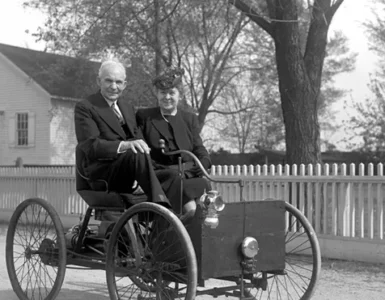Genghis Khan, born as Temujin around 1162, rose from humble beginnings to become one of the most powerful leaders in history. He founded the Mongol Empire, which became the largest contiguous empire the world had ever seen. His leadership and military genius transformed a group of nomadic tribes into a force that reshaped Asia and Europe. Though his methods were often brutal, his legacy has had a lasting impact on global history.
Early Life of Genghis Khan
Temujin was born into a Mongol tribe in what is now Mongolia. His early life was tough. His father, a tribal leader, was poisoned by enemies, leaving Temujin’s family vulnerable. At a young age, Temujin faced many hardships. His family was abandoned by their tribe, and they had to survive in the harsh Mongolian steppes.
Despite these struggles, Temujin showed leadership qualities early on. He formed alliances with other Mongol tribes and proved himself as a strong warrior. Over time, he united the Mongol tribes under his leadership. This unity was key to his later conquests.
Rise to Power
By 1206, Temujin had consolidated power over all the Mongol tribes. He was given the title “Genghis Khan,” meaning “universal ruler.” This was the beginning of his empire. Genghis Khan’s rise to power was based on his ability to unite the Mongols, who were traditionally divided and constantly at war with each other.
One of Genghis Khan’s strengths was his innovative military tactics. He built a highly disciplined and mobile army that relied on speed and coordination. His army was known for its use of cavalry, which allowed them to move quickly across vast distances and surprise their enemies. Genghis Khan also used psychological warfare. He instilled fear in his enemies by being ruthless in battle, but he was also known to spare those who surrendered without a fight.
The Mongol Conquests
Once he had unified the Mongol tribes, Genghis Khan set his sights on expanding his empire. He launched invasions into China, Central Asia, and even parts of Europe. His campaigns were swift and brutal. Cities that resisted were often destroyed, and their populations were massacred. However, cities that surrendered were usually spared and even incorporated into the empire.
The Mongol Empire grew rapidly under Genghis Khan’s leadership. By the time of his death in 1227, the Mongols controlled much of Central Asia and China. His successors continued his expansion, eventually creating an empire that stretched from Eastern Europe to the Pacific Ocean.
Military Tactics and Innovations
Genghis Khan’s military success was not only due to his aggressive tactics but also his organizational skills. He structured his army in units of 10, 100, 1,000, and 10,000 soldiers, which allowed for efficient communication and command. His army was also known for using intelligence and espionage. They would gather information about their enemies’ weaknesses before launching attacks.
Another key innovation was Genghis Khan’s use of meritocracy. He promoted soldiers based on skill and loyalty, rather than noble birth. This ensured that his army was led by capable commanders. It also helped to build loyalty among his troops, as they knew they could rise through the ranks based on their abilities.
Genghis Khan’s Impact on Trade and Culture
While Genghis Khan is often remembered for his conquests, his reign also had lasting impacts on trade and culture. He established the “Pax Mongolica,” a period of peace that allowed for safe trade across the empire. The Mongol Empire connected the East and the West, making it easier for goods, ideas, and technologies to flow between regions.
One of the most famous trade routes during this time was the Silk Road, which connected China to Europe. Under Mongol rule, the Silk Road flourished. Traders could travel long distances without fear of bandits, and the Mongols actively promoted trade by providing protection and reducing taxes on merchants.
The spread of ideas and technology was another important result of Genghis Khan’s conquests. The Mongols were open to learning from the people they conquered. They adopted new technologies, such as gunpowder and advanced siege warfare techniques, which helped them in future conquests. They also helped spread innovations like paper money, which originated in China, to other parts of the world.
Genghis Khan’s Death and Legacy
Genghis Khan died in 1227 during a campaign against the Western Xia dynasty in China. The exact cause of his death remains a mystery, with various accounts suggesting he fell from his horse or died from an illness. Despite his death, the Mongol Empire continued to expand under his successors, including his sons and grandsons.
One of his grandsons, Kublai Khan, would go on to establish the Yuan Dynasty in China, further solidifying the Mongol influence in the region. However, after Genghis Khan’s death, the empire eventually became too vast to manage and slowly fragmented into smaller khanates.
Controversy Surrounding Genghis Khan
Genghis Khan’s legacy is complex. On one hand, he is remembered as one of the greatest military leaders in history, known for his ability to conquer vast territories and create an empire that spanned continents. On the other hand, his methods were often brutal. His armies were responsible for the deaths of millions of people, and many cities were left in ruins after his invasions.
Despite this, Genghis Khan is also seen as a progressive leader in many respects. He implemented policies that promoted religious tolerance within his empire, and he valued education and the rule of law. The Mongol legal code, known as the Yassa, helped to maintain order within the vast empire.
Conclusion
Genghis Khan’s influence on world history cannot be overstated. His military conquests reshaped the political landscape of Asia and Europe, while his promotion of trade and cultural exchange helped to connect distant regions of the world. While his methods were often ruthless, his achievements continue to be studied and debated by historians. Genghis Khan’s legacy is one of both destruction and progress, and his impact is still felt in modern times.





Add comment